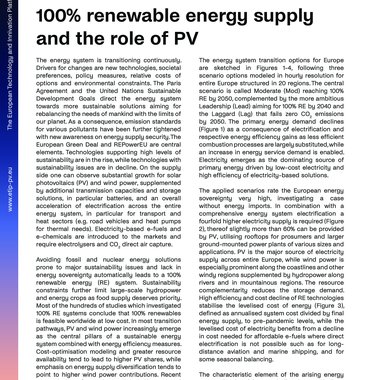
100% Renewable Energy Supply and the role of PV
The energy system is transitioning continuously. Drivers for changes are new technologies, societal preferences, policy measures, relative costs of options and environmental constraints. The Paris Agreement and the United Nations Sustainable Development Goals direct the energy system towards more sustainable solutions aiming for rebalancing the needs of mankind with the limits of our planet. As a consequence, emission standards for various pollutants have been further tightened with new awareness on energy supply security.
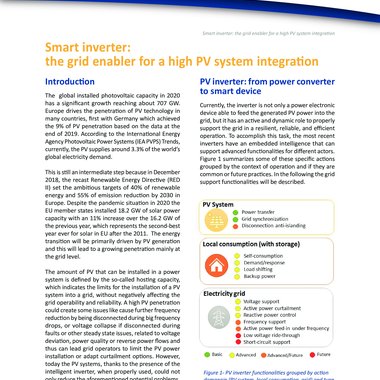
Smart inverter: the grid enabler for a high PV system integration
Currently, the inverter is not only a power electronic device able to feed the generated PV power into the grid, but it has an active and dynamic role to properly support the grid in a resilient, reliable, and efficient operation. To accomplish this task, the most recent inverters have an embedded intelligence that can support advanced functionalities for different actors.
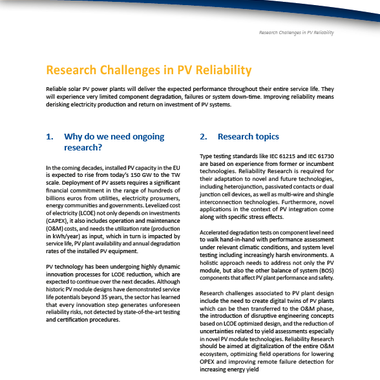
Research Challenges in PV Reliability (December 2020)
Reliable solar PV power plants will deliver the expected performance throughout their entire service life. They will experience very limited component degradation, failures or system down-time. Improving reliability means derisking electricity production and return on investment of PV systems.
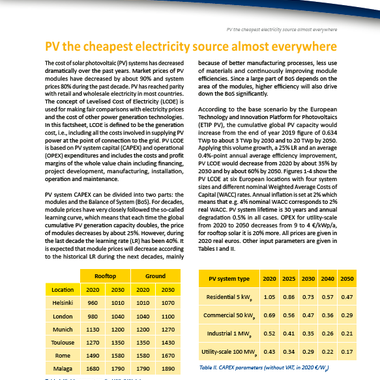
PV the cheapest electricity source almost everywhere (Update September 2020)
According to the base scenario by the ETIP PV, the cumulative global PV capacity would increase from the end of year 2019 figure of 0.634 TWp to about 3 TWp by 2030 and to 20 TWp by 2050.
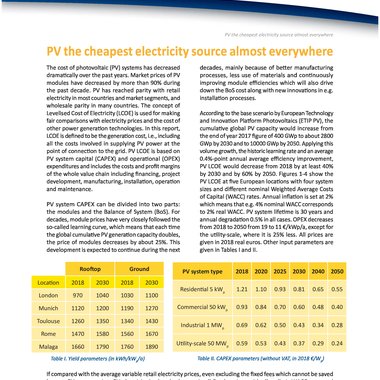
PV the cheapest electricity source almost everywhere (May 2019)
According to the base scenario by the European Technology and Innovation Platform for Photovoltaics, the cumulative global PV capacity would increase from the end of year 2018 figure of 0.50 TWp to about 3 TWp by 2030 and to 20 TWp by 2050.
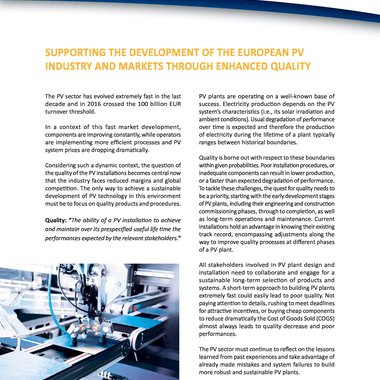
Supporting the Development of the European PV Industry and Markets through Enhanced Quality (September 2017)
The position of the European PV Industry will be strengthened by focusing on quality at all levels, resulting in new jobs and a long-term sustainable future for all interested parties, including society at large.
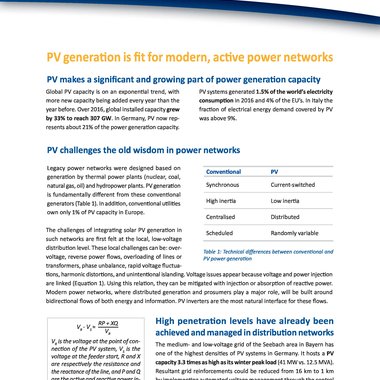
PV generation is fit for modern, active power networks - Update 2017 (August 2017)
Global PV capacity is on an exponential trend, with more new capacity being added every year than the year before. Over 2016, global installed capacity grew by 33% to reach 307 GW. In Germany, PV now represents about 21% of the power generation capacity.
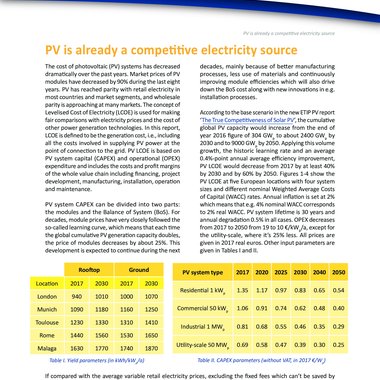
PV is already a competitive electricity source (May 2017)
The cost of photovoltaic (PV) systems has decreased dramatically over the past years. Market prices of PV modules have decreased by 90% during the last eight years. PV has reached parity with retail electricity in most countries and market segments, and wholesale parity is approaching at many markets.
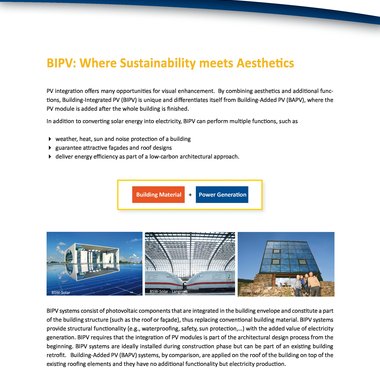
BUILDING-INTEGRATED PV – WHERE SUSTAINABILITY MEETS AESTHETICS (January 2015)
PV integration offers many opportunities for visual enhancement. By combining aesthetics and additional func-tions, Building-Integrated PV (BIPV) is unique and differentiates itself from Building-Added PV (BAPV), where the PV module is added after the whole building is finished.